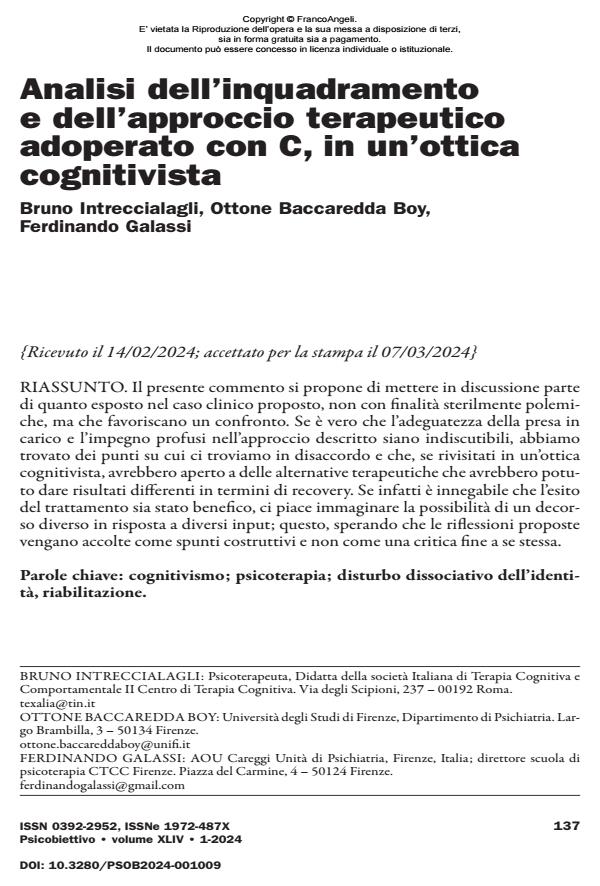Analysis of the Framing and Therape utic Approach Used with C, from a Cognitive Perspective
Journal title PSICOBIETTIVO
Author/s Bruno Intreccialagli, Ottone Baccaredda Boy, Ferdinando Galassi
Publishing Year 2024 Issue 2024/1
Language Italian Pages 6 P. 137-142 File size 125 KB
DOI 10.3280/PSOB2024-001009
DOI is like a bar code for intellectual property: to have more infomation
click here
Below, you can see the article first page
If you want to buy this article in PDF format, you can do it, following the instructions to buy download credits

FrancoAngeli is member of Publishers International Linking Association, Inc (PILA), a not-for-profit association which run the CrossRef service enabling links to and from online scholarly content.
The present commentary aims to critically examine aspects of the clinical case presented, not with a purely polemical intent, but rather to encourage constructive discussion. While acknowledging the appropriateness of the intervention and the commitment demonstrated in the described approach, we have identified points of disagreement. If reconsidered from a cognitive perspective, these points could have opened up alternative therapeutic options that might have yielded different outcomes in terms of recovery. While it is undeniable that the treatment’s outcome was beneficial, we envision the possibility of a different course in response to varied inputs, hoping that the presented reflections are embraced as constructive insights rather than mere criticism.
Keywords: cognitivism; psychotherapy; dissociative identity disorder; rehabilitation.
Bruno Intreccialagli, Ottone Baccaredda Boy, Ferdinando Galassi, Analisi dell’inquadramento e dell’approccio terapeutico adoperato con C, in un’ottica cognitivista in "PSICOBIETTIVO" 1/2024, pp 137-142, DOI: 10.3280/PSOB2024-001009